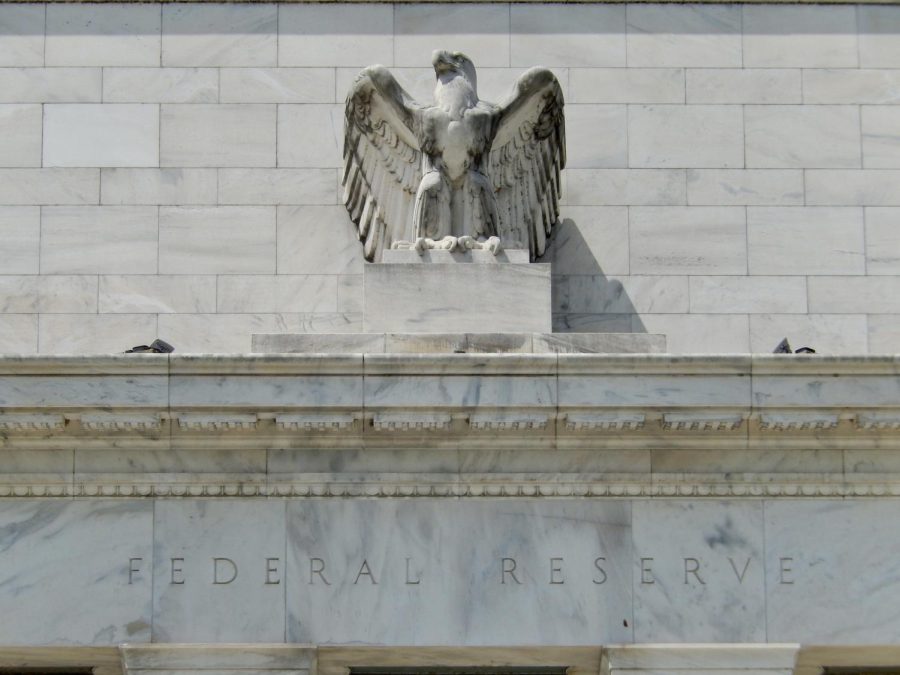Federal Reserve hikes interest rates by 25 basis points
February 13, 2023
The Federal Reserve raised its benchmark interest rate by 25 basis points following its meeting on Feb. 1.
The announced hike marked the eighth increase the Fed has made since March 2022. The central bank previously increased its rates by 50 basis points in December 2022, following four consecutive 75-basis-point hikes. As a result, the federal funds rate rose to a target range between 4.5% and 4.75%.
The 25-basis-point hike was not the only news of relief to economists, as the Fed signaled it is nearing the end of its hike cycle. For months, the Fed openly considered that it would taper its interest rate hikes.
The Fed’s policy was to initially keep interest rates low in order to support the economy during the COVID-19 pandemic. But, as the economy gradually recovered and inflation pressures built up, the Fed believed it was time to begin slowing down on borrowing.
The Fed continued interest rate increases into the new year, despite the markets’ expectations that the hikes would meet an end. Coinciding with the release of data that showed a strong labor market despite the central bank’s actions, the Dow Jones Industrial Average dropped 340 points, or 1%, by the closing bell on Jan. 5.
However, the market has since bounced back following the post-meeting press conference on Feb. 1, during which Fed Chair Jerome Powell emphasized “the disinflationary process” the financial institution is witnessing. The rather optimistic comments from the Fed resulted in the major indexes turning positive.
“It is a good thing that the disinflation that we have seen so far has not come at the expense of a weaker labor market, but I would also say that the disinflationary process that you now see underway is really at an early stage,” Powell said.
The hike is another effort to reduce liquidity in the financial markets and to control the exceptionally high inflation, which fortunately has been showing signs of slowing.
The Fed continued to reiterate that there will be ongoing increases as it aims to reach its target rate.
The central bank added that it would continue allowing up to $60 billion in Treasury securities. Additionally, it would roll off its balance sheet, which is worth more than $8.5 trillion every month in an attempt to tame inflation.
The Fed undoubtedly took these steps due to soaring inflation rates eased by consumer demand, supply chain disruptions and a tight labor market.
The Fed is concerned about inflation because it can erode the purchasing power of consumers. Inflation can also lead to higher prices for goods and services.
Anticipated by many economists, the interest rate increase was a sign that the Fed believes the economy is on the brink of stability — and that it is no longer in need of the support it required during the pandemic.
“I personally understand well that COVID is still out there but that it’s no longer playing an important role in our economy,” Powell said, adding that the Fed’s voting members “thought that people are handling it better, and the economy and the society are handling it better now.”
It is important to note that mortgage rates are indirectly impacted by the rate hikes. The mortgage rate is dependent on the 10-year Treasury yield, and both the yield and mortgage rates fell due to current economic conditions.
One sector affected by the rate hike includes the federal government, as its national debt surpassed $31 trillion.
Additionally, consumers who use credit cards with a variable annual percentage rate are charged based on the prime rate, which is largely dependent on the federal funds rate.
The global ramifications of the Fed’s hike continue to grow as the value of the U.S. dollar strengthens and countries worldwide struggle to recover from the effects of the pandemic.
Economists will await a Fed meeting in which the central bank will announce victory over inflation and halt the rate increases. For now, however, consumers should spend their money wisely amid persisting rate hikes.









